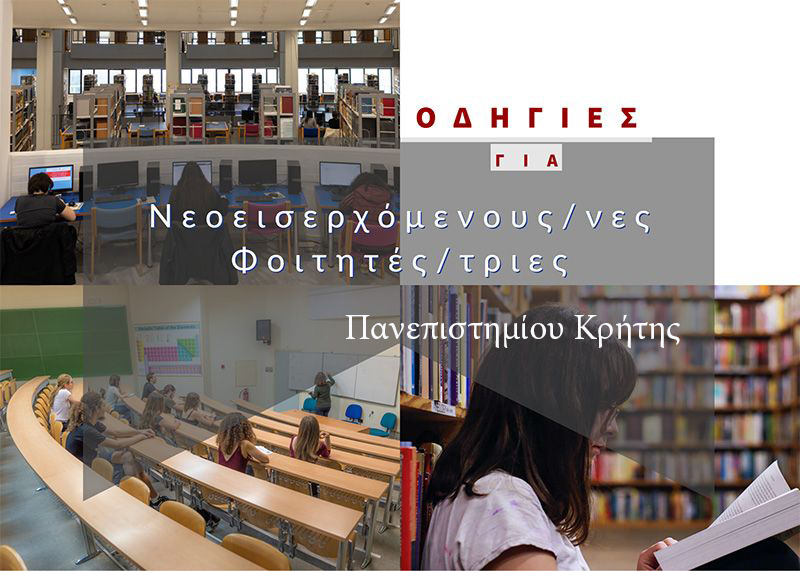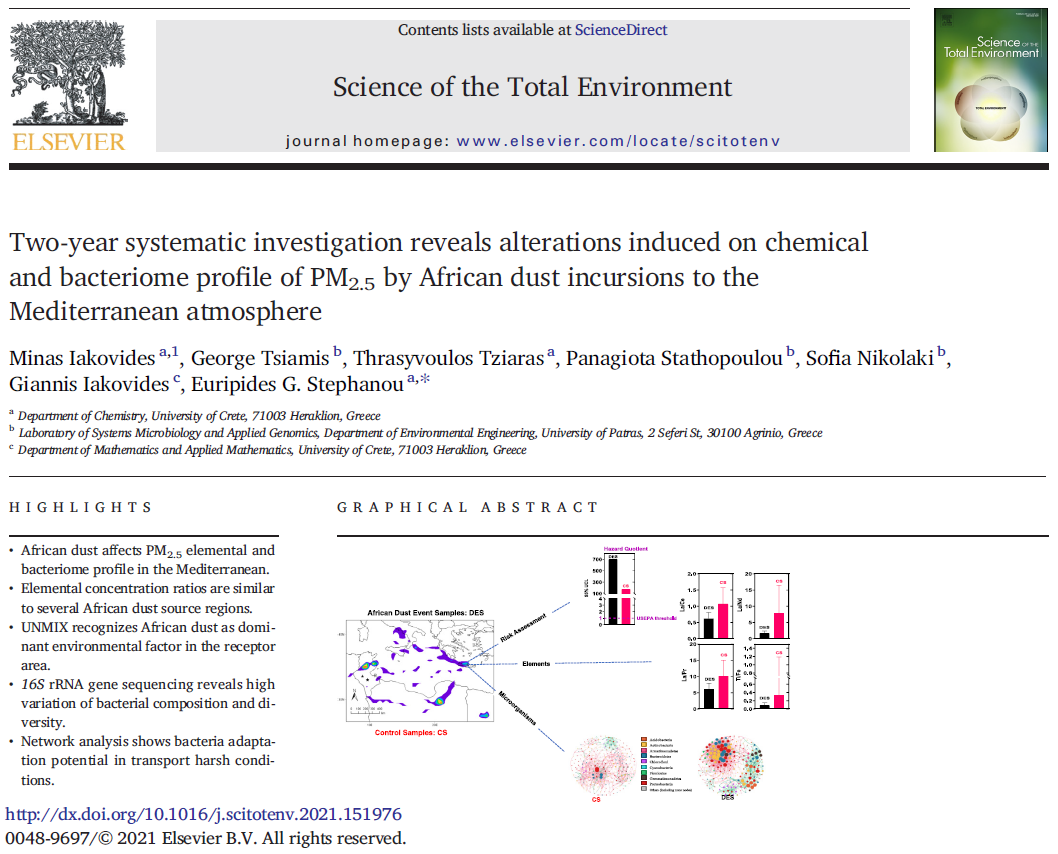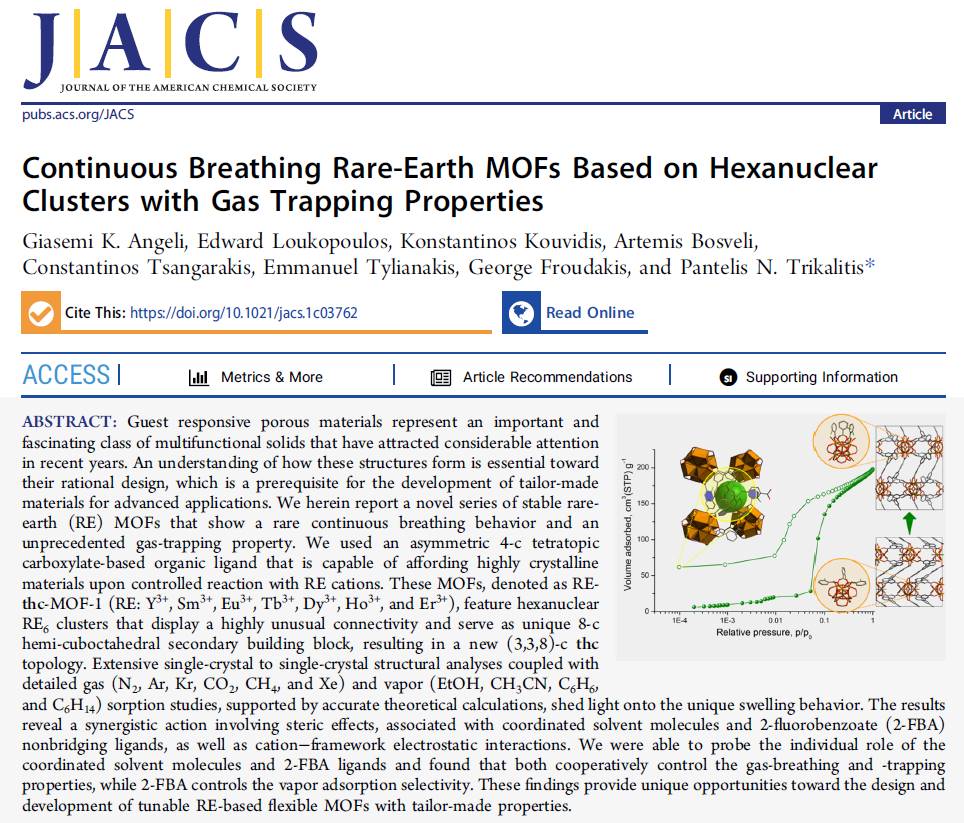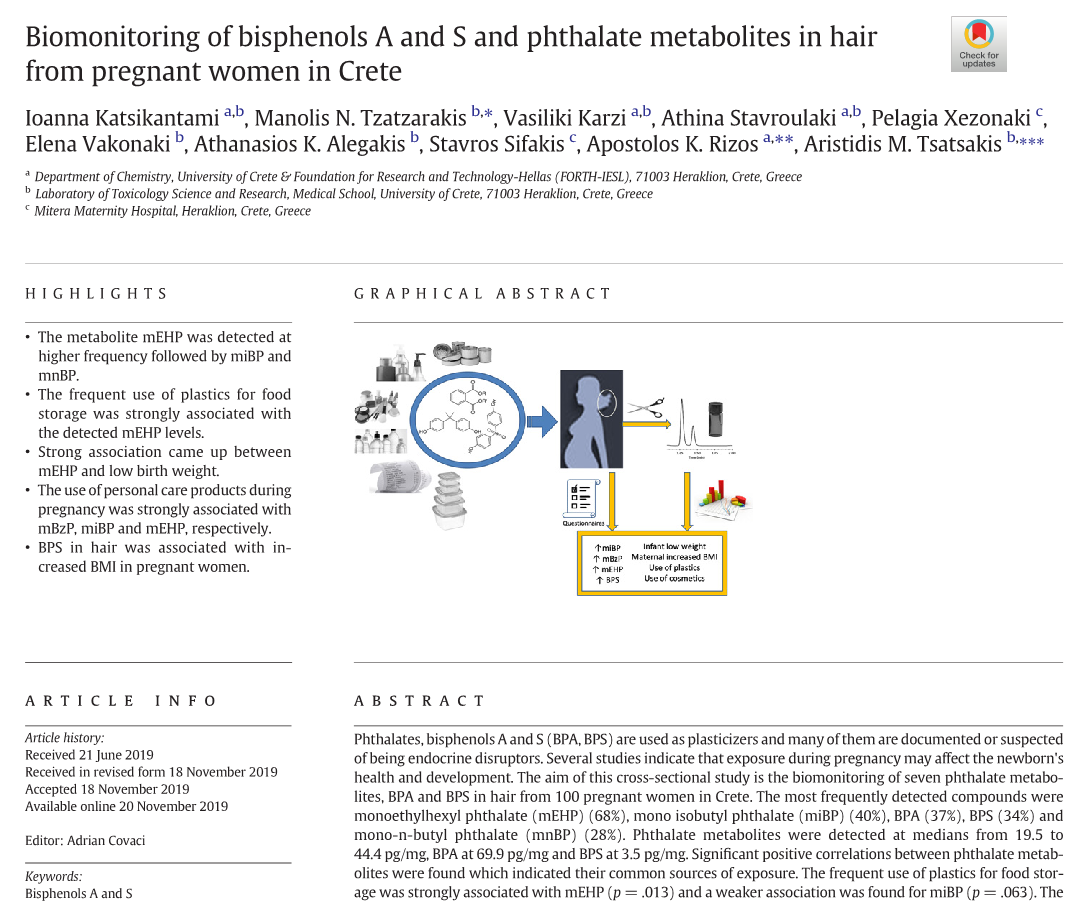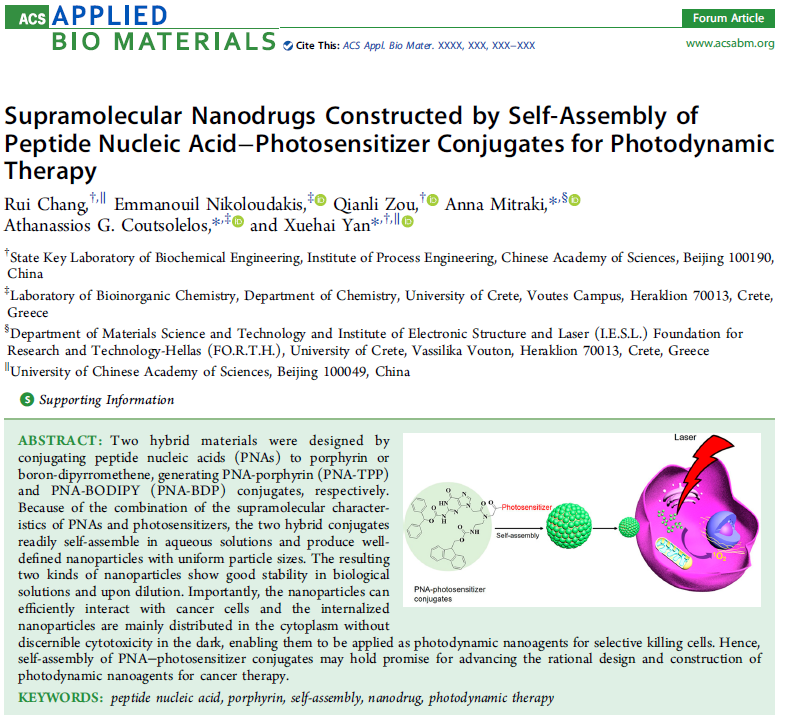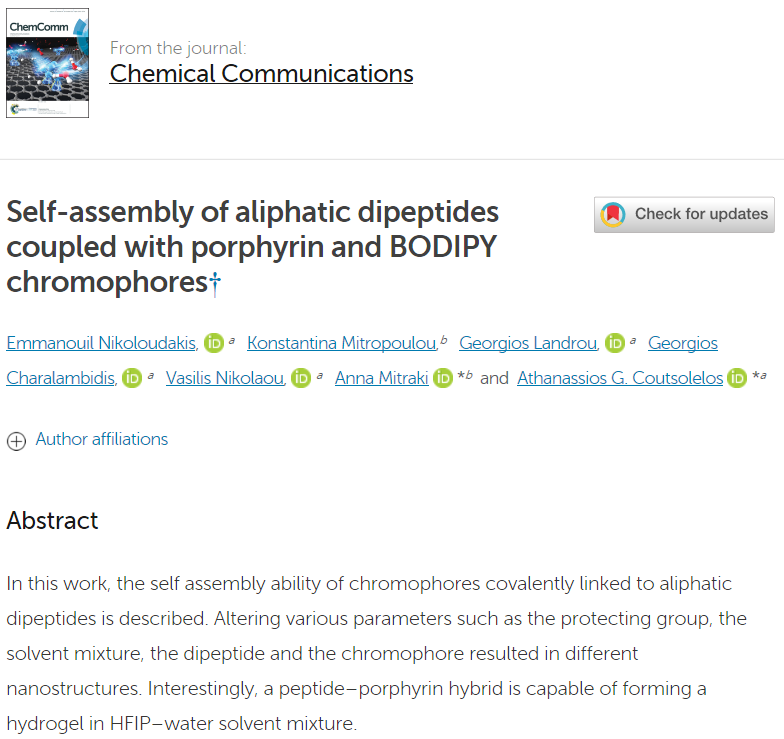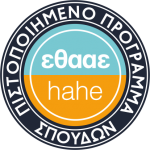 Απόφαση Συμβουλίου ΕΘΑΑΕ για Πιστοποίηση ΠΠΣ Χημείας
Απόφαση Συμβουλίου ΕΘΑΑΕ για Πιστοποίηση ΠΠΣ Χημείας
Το Συμβούλιο Αξιολόγησης και Πιστοποίησης της Εθνικής Αρχής Ανώτατης Εκπαίδευσης (ΕΘΑΑΕ) πιστοποιεί οτι το Πρόγραμμα Προπτυχιακών Σπουδών του Τμήματος Χημείας του Πανεπιστημίου Κρήτης συμμορφώνεται πλήρως με τις αρχές του Προτύπου Ποιότητας ΠΠΣ της ΕΘΑΑΕ και τις αρχές Διασφάλισης Ποιότητας του Ευρωπαικού Χώρου Ανώτατης Εκπαίδευσης (ESG 2015) για το επίπεδο σπουδών 6 του Εθνικού και Ευρωπαικού πλαισίου Προσόντων. Η διάρκεια ισχύος της πιστοποίησης ορίζεται σε τέσσερα έτη, από 29-05-2020 έως 28-5-2024. (Πιστοποιητικό)
Καλωσορίσατε στο Τμήμα Χημείας!
Το Τμήμα Χημείας του Πανεπιστημίου Κρήτης ιδρύθηκε το 1985 με ένα μικρό αριθμό σπουδαστών, ελάχιστο εξοπλισμό και χωρίς προϊστορία, αλλά με ένα όραμα: «Την προώθηση της μάθησης και την επίτευξη ακαδημαϊκής και ερευνητικής αριστείας».
Εκείνο το τολμηρό όραμα έχει καθοδηγήσει το τμήμα μας για 30 και πλέον έτη και το έχει κάνει ένα αξιοσέβαστο κέντρο έρευνας και εκμάθησης. Είναι σήμερα το καλύτερο Τμήμα Χημείας στην Ελλάδα, σύμφωνα με την τελευταία αξιολόγηση που έγινε το Απρίλιο του 2011, και από τα πλέον ανταγωνιστικά στο διεθνές προσκήνιο.
Η συλλογική προσπάθεια των μελών της ακαδημαϊκής κοινότητας διατηρεί το Τμήμα Χημείας σε ένα εξαιρετικά υψηλό επίπεδο τόσο από πλευράς εργασίας όσο και εκπαίδευσης γενικότερα.
Οποιοσδήποτε και αν είναι ο λόγος για τον οποίο επισκέπτεστε την ιστοσελίδα μας, ελπίζουμε να βρείτε τις πληροφορίες που ψάχνετε και η εμπειρία σας σε αυτή την περιπλάνηση να είναι ευχάριστη και εποικοδομητική.
Από τον Πρόεδρο του Τμήματος
Τελευταία Νέα & Ανακοινώσεις
ΠΠΔΕ – Προκήρυξη εισαγωγής στο χειμερινό εξάμηνο 2025-2026
Έναρξη υποβολής αιτήσεων Στεγαστικού Επιδόματος 2024-2025
Ενημέρωση Ανάρτησης Πρόσκλησης Ανταποδοτικής Υποτροφίας
Υπενθύμιση: Υποβολή αιτήσεων για σίτιση και στέγαση 2025-2026
Reasearch
Highlights
-
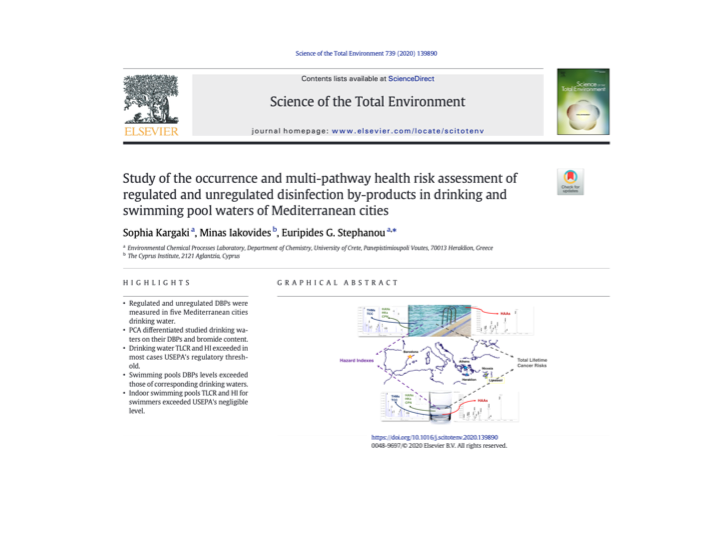
-
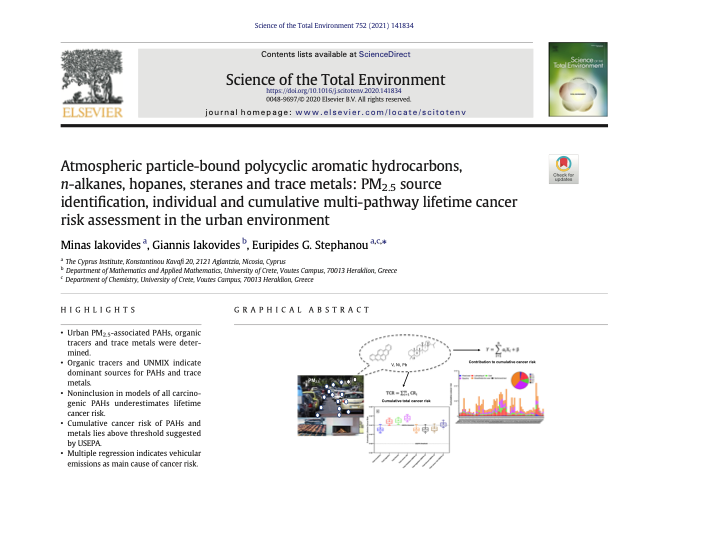
-
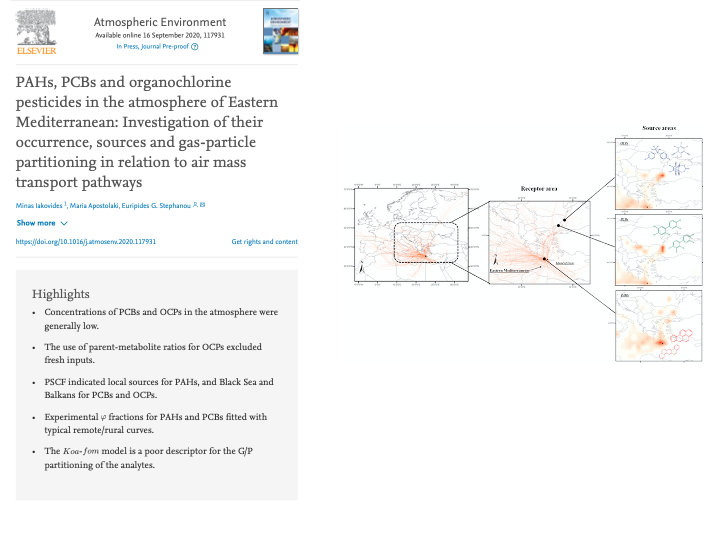
-
"Water Molecules Gating a Photoinduced One Electron Two Protons Transfer in a Tyr/His model of Photosystem II"
https://onlinelibrary.wiley.com/doi/abs/10.1002/anie.201804498
Our study provides an unprecedented example of a light‐induced electron‐transfer process in a TyrZ/His190 model of photosystem II, evidencing the movement of both the phenol and imidazole protons along an isoenergetic pathway.
Editor’s comments
De: "Angewandte" <em@editorialmanager.com>
Objet: Decision on your Manuscript 201804498 for Angewandte Chemie
Date: 30 avril 2018 à 11:06:26 UTC+2
À: "Marie Sircoglou" <marie.sircoglou@u-psud.fr>
Répondre à: "Angewandte" <angewandte@wiley-vch.de>
Title: "Water Molecules Gating a Photoinduced One Electron Two Protons Transfer in a Tyr/His model of Photosystem II"
DOI: 10.1002/anie.201804498 and 10.1002/ange.201804498
for citing the article before publication in an issue, please use this DOI number.
______________________________________________________Dear Dr Sircoglou,
Congratulations !
According to the evaluation of referees the results reported in your Communication are “highly important” or even “very important”. Less than 10% of our manuscripts receive such a positive review. We recommend that you tell the publicity/press department of your institute about your publication and the excellent reviews that it has received; a press release could be possible. Furthermore, you are welcome to submit graphical material suitable for display on the outside or inside covers of Angewandte Chemie. Manuscripts that have received such positive recommendations are favored in our selection process. Since there is a close competition for the cover, it is absolutely necessary that the proposal fits our layout.
-
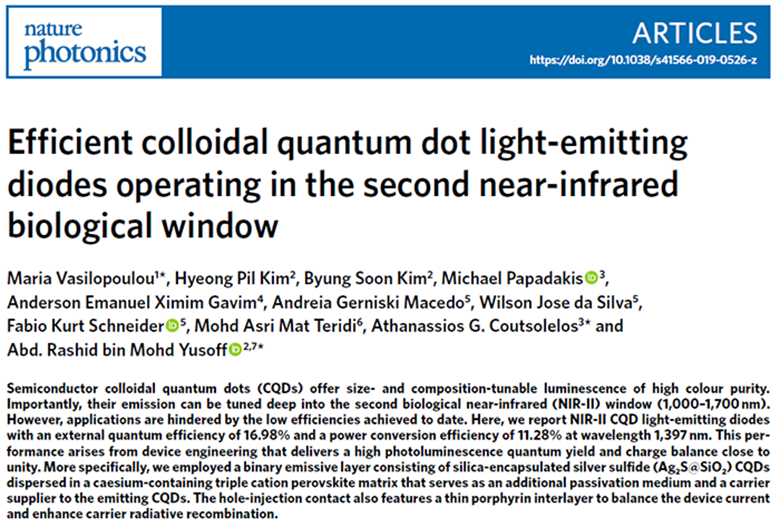
-
Investigating the Uptake of Arsenate by Chlamydomonas reinhardtii Cells and its Effect on their Lipid Profile using Single Cell ICP–MS and Easy Ambient Sonic-Spray Ionization–MS
Emmanouil MavrakisLeonidas MavroudakisNikos Lydakis-SimantirisSpiros A. Pergantis*
Abstract
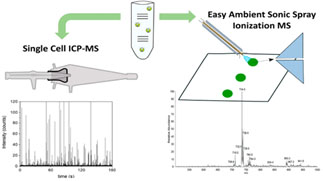 The complementary use of single cell atomic mass spectrometry (MS) and ambient molecular MS allowed for the in-depth study of arsenate uptake by Chlamydomonas reinhardtii cells and of the effect this toxic metalloid species has on their lipid profile. Compared to conventional inductively coupled plasma mass spectrometry (ICP–MS) analysis, in which case hundreds of thousands of cells are digested and then analyzed, it is demonstrated that single cell (SC) ICP–MS provides uptake data that are potentially of greater biological relevance. This includes the arsenic mass distribution within the cell population, which fits to a log-normal probability function, the most frequently contained arsenic mass within the cells (1.5–1.8 fg As per cell), and the mean arsenic uptake value (ranging from 2.7 to 4.1 fg As per cell for the three arsenate incubation concentrations, that is, 15, 22.5, and 30 μg As per mL) derived from the log-normal arsenic mass distribution within the cell population. The SC approach also allows for differentiating the arsenic present in and/or adsorbed on the cells, from the arsenic present in the extracellular solution, in a single analysis. In a similar fashion, ambient molecular MS in the form of desorption easy ambient sonic spray ionization (EASI) -MS was used to rapidly profile cell membrane lipids from cells spotted directly on a glass slide. EASI–MS analysis revealed that cells grown in the presence of increasing concentrations of arsenate exhibited changes in the degree of saturation of their membrane lipids, as was observed by the increasing intensity ratio of lipids with less unsaturated acyl chains to the same type of lipids with more unsaturated fatty acid chains. Thus, indicating “homeoviscous adaptation” of extraplastidial and thylakoid cell membranes, induced by the presence of arsenate.
The complementary use of single cell atomic mass spectrometry (MS) and ambient molecular MS allowed for the in-depth study of arsenate uptake by Chlamydomonas reinhardtii cells and of the effect this toxic metalloid species has on their lipid profile. Compared to conventional inductively coupled plasma mass spectrometry (ICP–MS) analysis, in which case hundreds of thousands of cells are digested and then analyzed, it is demonstrated that single cell (SC) ICP–MS provides uptake data that are potentially of greater biological relevance. This includes the arsenic mass distribution within the cell population, which fits to a log-normal probability function, the most frequently contained arsenic mass within the cells (1.5–1.8 fg As per cell), and the mean arsenic uptake value (ranging from 2.7 to 4.1 fg As per cell for the three arsenate incubation concentrations, that is, 15, 22.5, and 30 μg As per mL) derived from the log-normal arsenic mass distribution within the cell population. The SC approach also allows for differentiating the arsenic present in and/or adsorbed on the cells, from the arsenic present in the extracellular solution, in a single analysis. In a similar fashion, ambient molecular MS in the form of desorption easy ambient sonic spray ionization (EASI) -MS was used to rapidly profile cell membrane lipids from cells spotted directly on a glass slide. EASI–MS analysis revealed that cells grown in the presence of increasing concentrations of arsenate exhibited changes in the degree of saturation of their membrane lipids, as was observed by the increasing intensity ratio of lipids with less unsaturated acyl chains to the same type of lipids with more unsaturated fatty acid chains. Thus, indicating “homeoviscous adaptation” of extraplastidial and thylakoid cell membranes, induced by the presence of arsenate.Link:
https://pubs.acs.org/doi/10.1021/acs.analchem.9b00917?ai=6644
-
Rapid approach to complex boronic acids
Constantinos G. Neochoritis1*†, Shabnam Shaabani1*, Maryam Ahmadianmoghaddam1,
Tryfon Zarganes-Tzitzikas1, Li Gao1, Michaela Novotná1, Tatiana Mitríková1,
Atilio Reyes Romero1, Marina Ika Irianti1, Ruixue Xu1, Joe Olechno2, Richard Ellson2,
Victoria Helan3, Michael Kossenjans3, Matthew R. Groves1, Alexander Dömling1‡The compatibility of free boronic acid building blocks in multicomponent reactions to readily create large libraries of diverse and complex small molecules was investigated. Traditionally, boronic acid synthesis is sequential, synthetically demanding, and time-consuming, which leads to high target synthesis times and low coverage of the boronic acid chemical space. We have performed the synthesis of large libraries of boronic acid derivatives based on multiple chemistries and building blocks using acoustic dispensing technology. The synthesis was performed on a nanomole scale with high synthesis success rates. The discovery of a protease inhibitor underscores the usefulness of the approach. Our acoustic dispensing–enabled chemistry paves the way to highly accelerated synthesis and miniaturized reaction scouting, allowing access to nprecedented boronic acid libraries.
-
Most-read (downloaded) article published in 2018 from Greece in Organic Letters Magazine

The Organic Letters team has put together a Virtual Issue featuring the most-read articles (most downloaded) published in 2018 from different countries, based on the location of the corresponding author(s). A paper from Vassilikogiannakis' team is included in the list:
Asymmetric and Site-Selective [3 + 2]-Annulations for the Synthesis of High-Value Bicyclic Lactams
Dimitris Kalaitzakis*, Manolis Sofiadis, Myron Triantafyllakis, Konstantinos Daskalakis, and Georgios Vassilikogiannakis*
Org. Lett., 2018, 20 (4), pp 1146–1149
DOI: 10.1021/acs.orglett.8b00076Link:
https://pubs.acs.org/page/orlef7/vi/orglett-globalreach2018.html
-
Most-read (downloaded) article published in 2018 from Greece in Organic Letters Magazine

The Organic Letters team has put together a Virtual Issue featuring the most-read articles (most downloaded) published in 2018 from different countries, based on the location of the corresponding author(s). A paper from Vassilikogiannakis' team is included in the list:
Asymmetric and Site-Selective [3 + 2]-Annulations for the Synthesis of High-Value Bicyclic Lactams
Dimitris Kalaitzakis*, Manolis Sofiadis, Myron Triantafyllakis, Konstantinos Daskalakis, and Georgios Vassilikogiannakis*
Org. Lett., 2018, 20 (4), pp 1146–1149
DOI: 10.1021/acs.orglett.8b00076Link:
https://pubs.acs.org/page/orlef7/vi/orglett-globalreach2018.html




